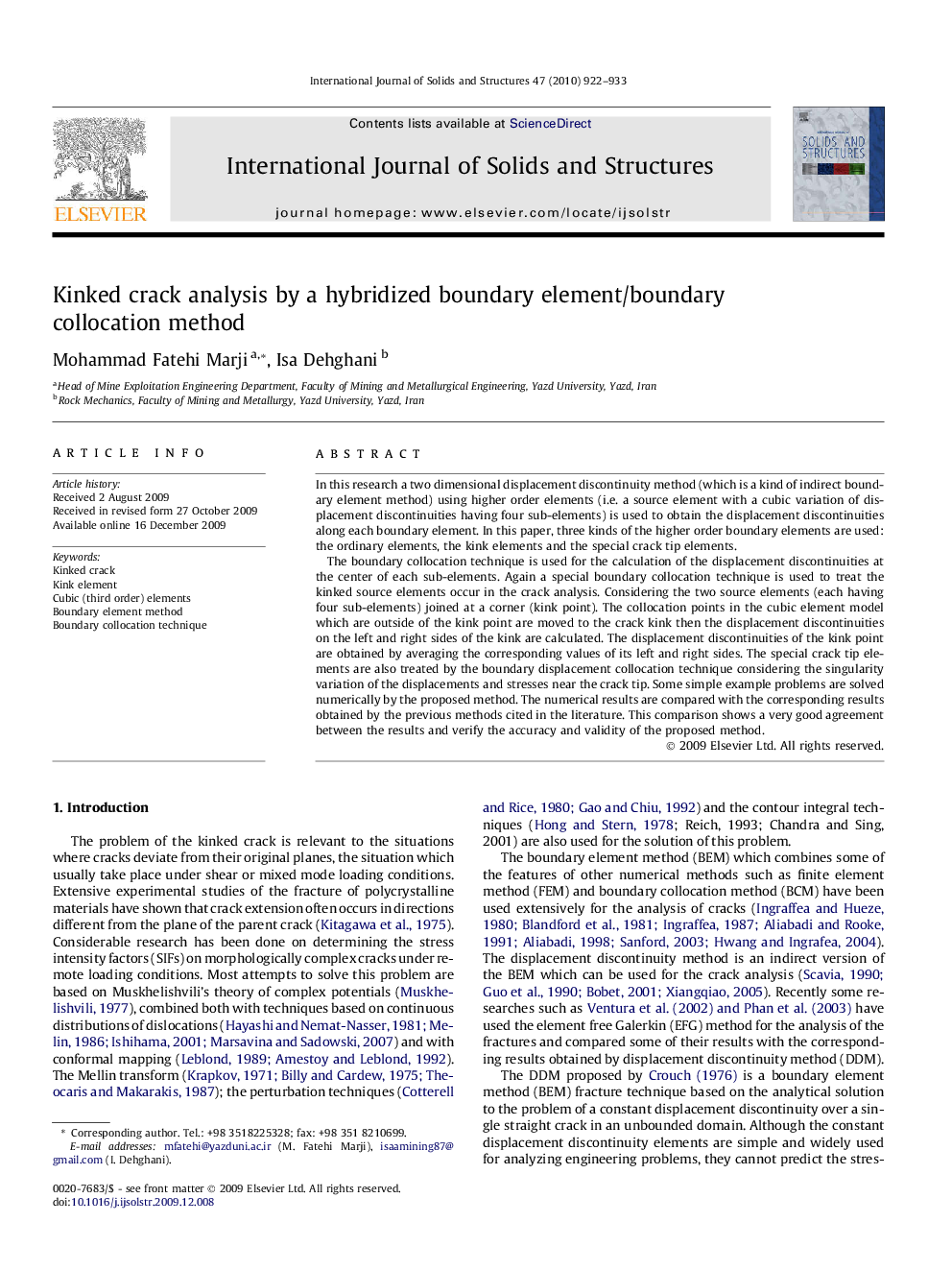| Article ID | Journal | Published Year | Pages | File Type |
|---|---|---|---|---|
| 278686 | International Journal of Solids and Structures | 2010 | 12 Pages |
In this research a two dimensional displacement discontinuity method (which is a kind of indirect boundary element method) using higher order elements (i.e. a source element with a cubic variation of displacement discontinuities having four sub-elements) is used to obtain the displacement discontinuities along each boundary element. In this paper, three kinds of the higher order boundary elements are used: the ordinary elements, the kink elements and the special crack tip elements.The boundary collocation technique is used for the calculation of the displacement discontinuities at the center of each sub-elements. Again a special boundary collocation technique is used to treat the kinked source elements occur in the crack analysis. Considering the two source elements (each having four sub-elements) joined at a corner (kink point). The collocation points in the cubic element model which are outside of the kink point are moved to the crack kink then the displacement discontinuities on the left and right sides of the kink are calculated. The displacement discontinuities of the kink point are obtained by averaging the corresponding values of its left and right sides. The special crack tip elements are also treated by the boundary displacement collocation technique considering the singularity variation of the displacements and stresses near the crack tip. Some simple example problems are solved numerically by the proposed method. The numerical results are compared with the corresponding results obtained by the previous methods cited in the literature. This comparison shows a very good agreement between the results and verify the accuracy and validity of the proposed method.
